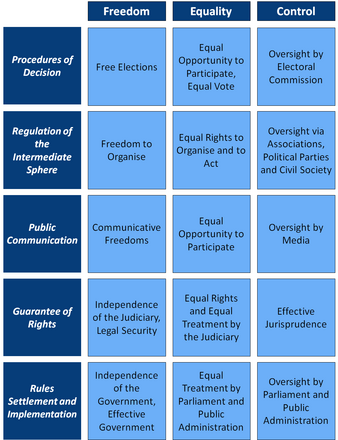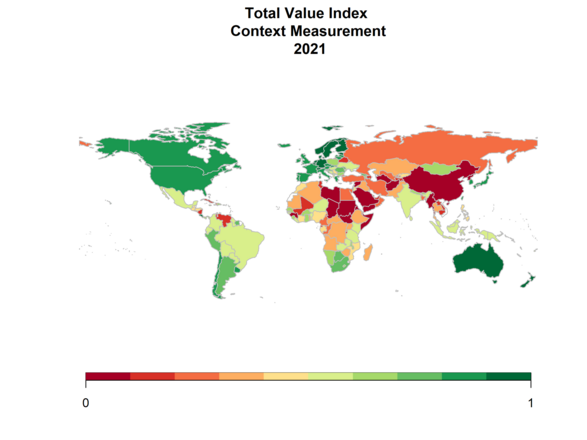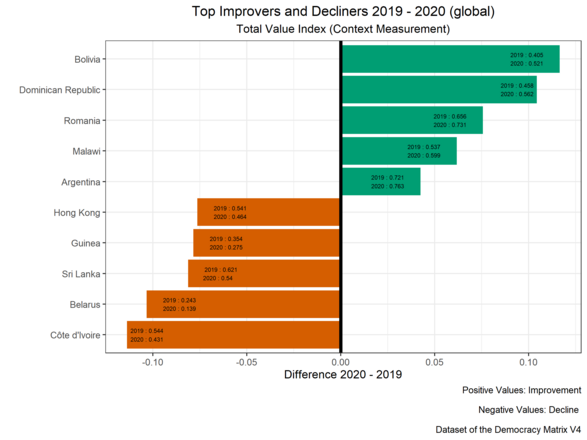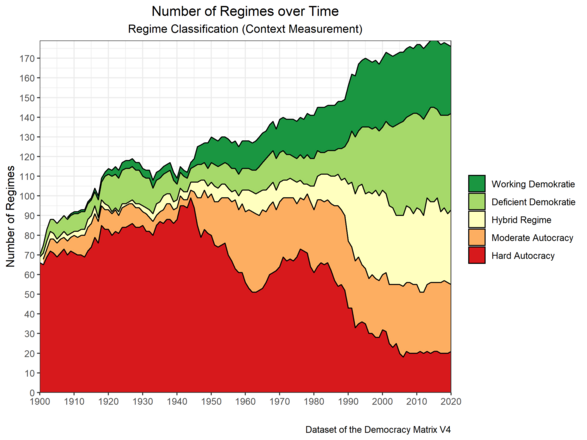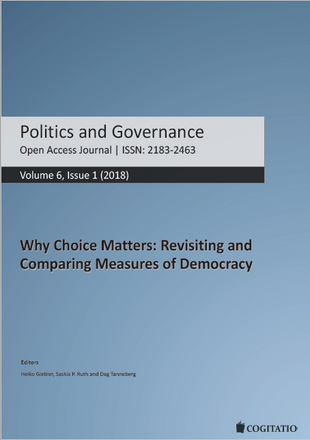Get Detailed Insight into Democracy Quality
In order to be able to determine the democratic quality of a state, altogether 15 matrix fields are studied in the democracy matrix. On the one hand, the extent of the three key democracy dimensions of political freedom, political equality, and political and legal control are surveyed. On the other hand, the matrix depicts the functioning of five institutions: procedures of decision, regulation of the intermediate sphere, public communication, guarantee of rights, and rules settlement and implementation. Thus, all relevant partial areas of democratic regimes are considered, and these partial areas can be combined into overall assessments. In addition, the democracy matrix distinguishes between three levels of analysis – core measurement, context measurement and trade-off measurement – and thus makes possible a differentiated look at the democracy quality of political systems. Further information is provided by a brief presentation and a more in-depth explanation of the conception of the matrix and the data used.
Identify Strengths and Weaknesses of Democracies
The goal of the democracy matrix and comparable measurement tools in the research area of democracy measurement is to determine the democratic quality of political systems worldwide, in order to be able to compare them to each other. For quality measurement allows us not only to examine democracies, but also autocratic regimes, since the basic categories of the concept of the democracy matrix also adequately represent autocracies – at a lower level of quality, of course. Therefore, the democracy matrix can also be understood as a measurement apparatus for regime measurement. Democracy matrix data is thus well-suited to the study of transformation processes. In this project, however, our focus is the differentiated examination of democracies.
The specific construction of the democracy matrix and its 15 fields gives rise to detailed quality types. On the one hand, these allow for the classification of political systems into hard autocracies, moderate autocracies, hybrid systems, and deficient and functioning democracies . On the other hand, they make apparent at a glance where democratic strengths and weaknesses are found in a country. Thus, for instance, free and fair elections can be held regularly in a country, but the standards of the rule of law are not assured. Further information on the individual regime classifications is to be found here.
Discover Conflicting Democratic Objectives in a Country
A particular innovation of the democracy matrix concerns the measurement of so-called trade-offs, which express an irresolvable conflict of political values on which a society has to take a position. For it is not possible to maximise all democracy dimensions simultaneously and, as consequence, the dimensions come into conflict. This also excludes the possibility of the existence of a “perfect” democracy. Would the country like to be a libertarian or egalitarian democracy? Both strengths and weaknesses are tied to this decision, and within the group of democracies, particular distinguishing characteristics or, in other words, democracy profiles can be identified. This allows fundamental questions regarding democracy profiles to be investigated from a comparative perspective. Thus, we can, for instance, examine whether the principle of political freedom is more strongly emphasised for the political system in Great Britain than in Germany. More can be read here on what trade-offs are and how they can be measured within the democracy matrix.
Study the World of Autocracies and Democracies
On our home page, you have the opportunity to conduct your own investigations with the help of the democracy matrix, by using the wide variety of offerings of our online analysis. For profile comparison and quality measurement, there is the possibility of matrix representation and of a radar chart; for temporal comparison, there is the country and variable graph. The online analysis can be started here.


